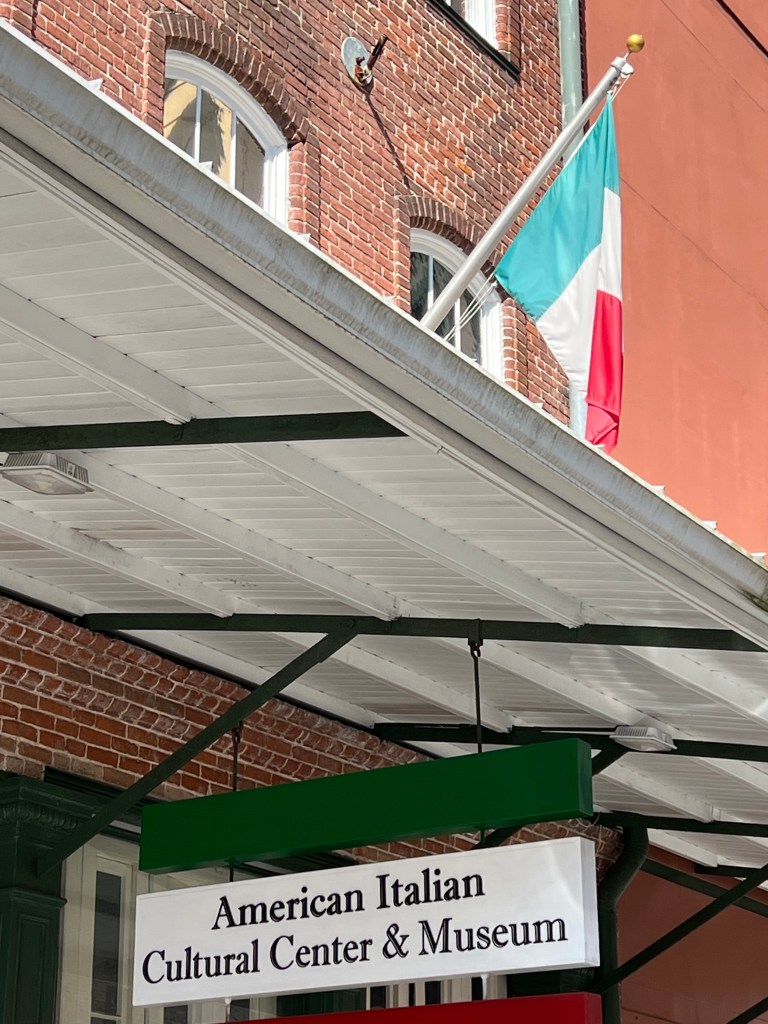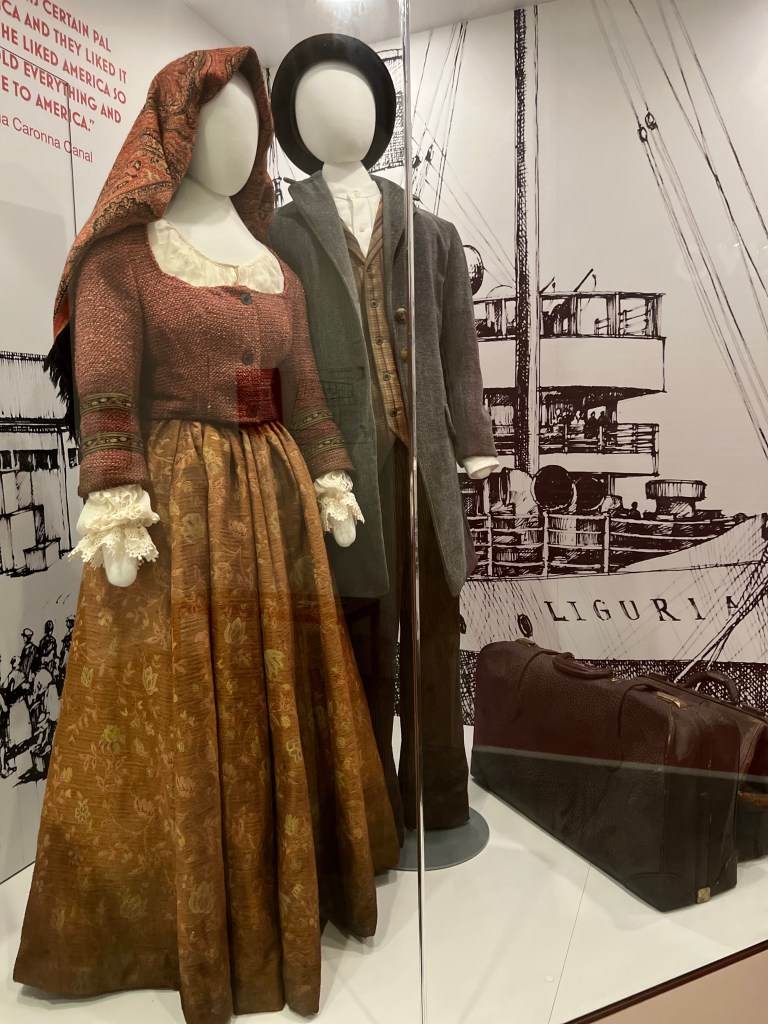I finally got my chance.

I’m a fairly frequent traveler to New Orleans, and I’ve always been intrigued by its American Italian Cultural Center and Museum. But whenever I happen to pass by it for one reason or another, it’s been closed.

So yesterday was my lucky day. I was in New Orleans, and happened to pass the museum when it was actually open, 45 minutes before closing time. Whew, we just made it.
The front door was locked, and the director who responded to our buzzer seemed more than a little surprised that there were real live customers wanting to come in. He even had some difficulty figuring out how to collect our $7 admission fee, so rarely did he have to do it. But when he recovered and warmed to his subject, he proudly announced, “New Orleans has the second highest Italian-American population in the U.S., after New York.” Hmm, I thought. Really? More than Philly?? Chicago? Boston? It turns out that two minutes on Google reveals that indeed Philadelphia, Chicago and Boston are numbers, two, three and four and poor New Orleans ranks twenty-second, way behind even smaller towns like New Haven.

But never mind, Italian immigrants and their descendants truly did have an impact on New Orleans as we know it, regardless of their national ranking. There is a direct line from Venice’s Carnevale to New Orleans’ Mardi Gras, including the wearing of elaborate costumes and masks.

They had an impact on the local cuisine, and there are numerous famous generations-old restaurants that bear Italian names, like Mosca’s, Mandina’s, Pascal’s Manale, and Casamento’s. They played a role in the birth of jazz, even claiming that an Italian musician, Nick Larocca, invented the term jazz in 1915, a factoid perhaps as dubious as New Orleans ranking #2.

The Italian immigrants to New Orleans, mostly Sicilians, faced terrible hardships, as do most immigrant groups in America. Poverty, backbreaking menial labor, discrimination, even lynching are all part of their story. And like most immigrant groups, they endured, survived and thrived, and have much to be proud of.

So given that, it was startling to come across piles of prominently placed brochures, titled “Why Columbus Matters,” claiming that Columbus is being defamed and denigrated in our schools and our society, based on falsehoods spread by “special interest groups”. It lists such contributions as the “cultural exchange “ that Columbus’s discovery prompted between Europe and the Americas, and even includes a heading, “Columbus never tortured the native populations.” Hmm.

I have never thought of Columbus Day as having anything to do with Columbus himself, but rather as a day to celebrate the story and contributions of Italian-Americans, in the same way that St. Patrick’s Day has virtually nothing to do with the Saint himself in most people’s minds. There is so much to be proud of in the Italian experience; there is no reason to be defensive about a flawed figure, whose celebration connotes disrespect to the horrific experiences of others. Let’s give Columbus the heave-ho; we don’t need him anymore.


Loved your New Orleans Italian museum piece. Lee and I want to join that guy who said NO had the second largest Italian American population. After reading that we debated the year Columbus sailed. I insisted 1792 and Lee wasn’t exactly sure but knew I was far off. What a moron, right?
Sent from my iPhone
>
LikeLike
It would be a neat trick to discover America 16 years after the Declaration of Independence!
LikeLike
Bravo, Gigi. I couldn’t agree more with your point that Columbus Day and St. Patrick’s Day are really celebrations of the Italian and Irish peoples and their cultures. I don’t know about St. Patrick, but Columbus definitely deserves the heave-ho!
LikeLike